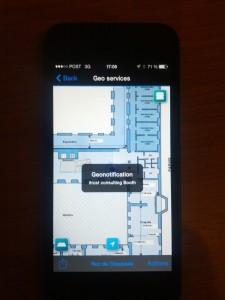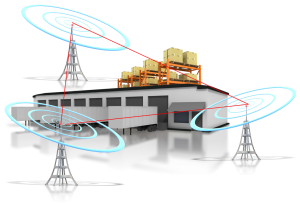The deployment of positioning applications requires two components: maps and a positioning engine. In outdoor, positioning relies mainly on Global Navigation Satellite Systems as GPS, GLONASS and the upcoming Galileo, while maps are easily accessible through Google maps, Bing maps, Apple maps and other providers.
Indoor maps have been launched in a few countries a year ago now by Google and Bing Maps, and these have been expanding to many other countries in the last weeks. In particular, selected large venues such as shopping centres, retail stores, airports and museums are already available in France, United Kingdom, United States and Japan, among others.
Recently Google added walking directions for buildings in the United States and Japan.

Indoor navigation technologies are also available but with limited accuracy when in comparison with what is now achieved outdoor. Indoor solutions based on pseudolites such as the solution developed in the i-GOing project will soon be available, and may reach similar performance. Moreover, the potential grey zone of signal losses induced by the outdoor-indoor transition could be avoided by the standardisation approach led in this research project which will allow considering indoor pseudolite networks as an extension of the GNSS.
An interesting reflection is that the deployment of digital outdoor maps was pushed by the increased performance of GNSS, namely after the GPS Selective Availability was turned off (May 2000). In contrast, regarding indoor positioning, accurate maps are pushing the development of more accurate positioning systems such as pseudolite network systems.






